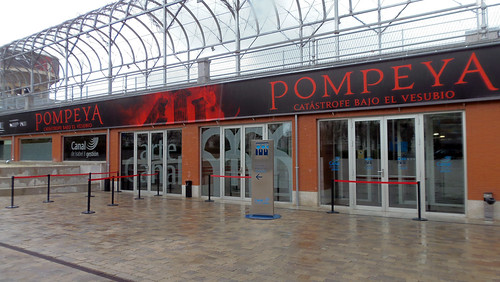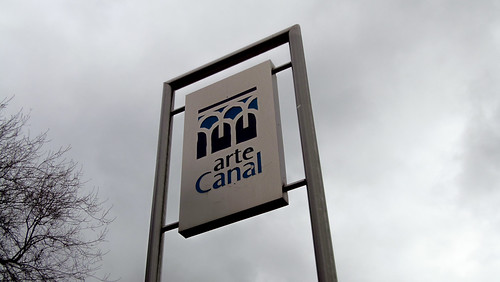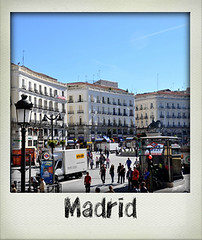Tinha visto á pouco tempo um documentário sobre Pompeia e como era a vida naquela cidade antes de ter sido destruída pela ira do Vesúvio e ao saber desta exposição no Centro Arte do Canal decidimos aproveitar este fim de semana chuvoso para visitá-la.
Fica junto á Plaza de Castilla e as entradas são 6€ por pessoa (adulto). Não vale a pena ir carregado com máquina fotográfica porque não se pode fotografar no interior.
I'd seen not long ago a documentary about Pompeii and what life was like in that city before it was destroyed by the wrath of Vesuvius and when I Heard about this exhibition at the Arte do Canal center we decided to visit it on this rainy weekend.
It is next to the Plaza de Castilla and the entrance is € 6 per person (adult). You don't need to go loaded with a camera because you can not take pictures inside.
It is next to the Plaza de Castilla and the entrance is € 6 per person (adult). You don't need to go loaded with a camera because you can not take pictures inside.
Para quem gosta de história (eu!eu!eu!) e em particular de esta época a exposição é interessante. Em alguns momentos aterradora principalmente na parte audiovisual em que te mostram as varias erupções do Vesúvio ao longo dos anos e o facto de nos seus arredores continuarem a viver pessoas. Se uma nova catástrofe acontece, são três milhões os habitantes que podem vir a ser afectados e não três mil como na de do ano de 79 d.C..
Grande parte das peças são originais cedidas pelo Museu de Nápoles e vindas das cidades de Pompeia, Herculano e outras nos arredores.
For those who like history (me!me!me!) and in particular this era, the exhibition is interesting. In some moments chilling mainly in the audiovisual that will show the various eruptions of Vesuvius over the years and that in it's surroundings people continue to live. If another disaster happens, there are three million residents who may be affected and not three thousand as of in the year 79 AD.
Much of the original parts are provided by the Museum of Naples and came from the cities of Pompeii, Herculaneum and others around.
Much of the original parts are provided by the Museum of Naples and came from the cities of Pompeii, Herculaneum and others around.
>>> Cartaz oficial da Exposição (not my photo)
Foi graças a um rei espanhol, D. Carlos III que se iniciou no século XVIII as escavações que permitiram conhecer mais sobre a história de Pompeia, na altura era também rei de Sicilia e Nápoles reclamando o direito á zona onde procedeu á descoberta de um dos maiores testemunhos da vida na época dourada do Imperio Romano.
Impressiona ver o cão carbonizado numa posição de agonia ou esqueletos de pessoas que tentaram fugir pela Praia. Mas o que mais gostei foi a reconstituição de uma casa da época e alguns detalhes como os alfinetes de dama (muito parecidos ao que usamos hoje) que se utilizava para prender os vestidos, além das peças de bijuteria.
It was thanks to a Spanish King, D. Carlos III who order the excavations in the eighteenth century that allowed us to know more about the history of Pompeii, at the time he was also king of Sicily and Naples claiming the right to the area where proceeded to the discovery of one of the greatest testimonies of life in the Golden Age of the Roman Empire.
Impressive to see the dog in a position charred skeletons of agony or of people who tried to flee the beach. But what I liked most was the rebuilding of a house at the time and some details like the pins lady (very similar to what we use today) that was used to hold the dresses, in addition to pieces of jewelry.
Impressive to see the dog in a position charred skeletons of agony or of people who tried to flee the beach. But what I liked most was the rebuilding of a house at the time and some details like the pins lady (very similar to what we use today) that was used to hold the dresses, in addition to pieces of jewelry.
Website: www.pompeyaenmadrid.es
Metro: Plaza de Castilla
Guia
Madrid/Madrid Guide





Sem comentários:
Enviar um comentário